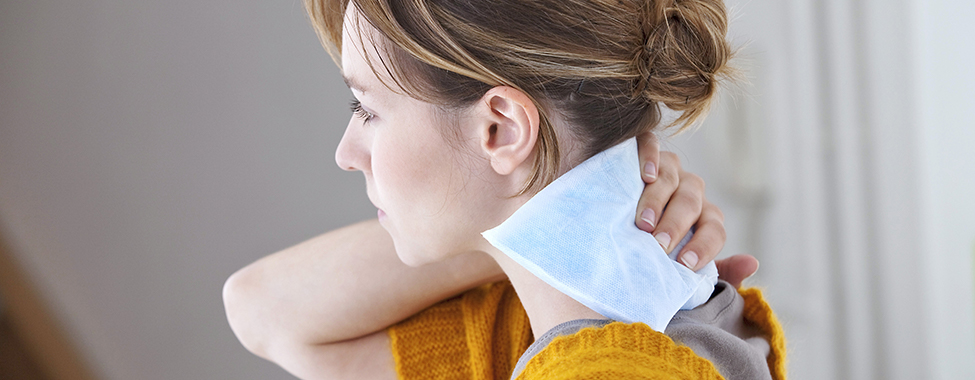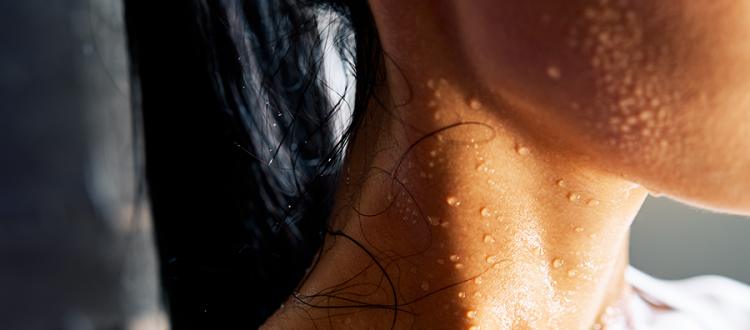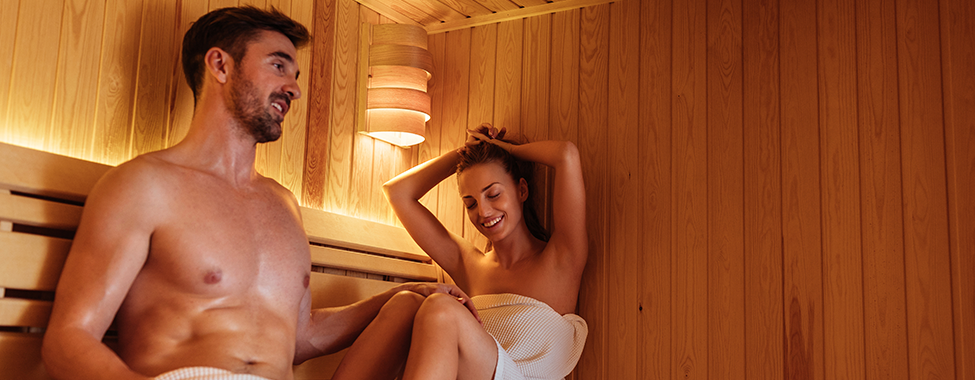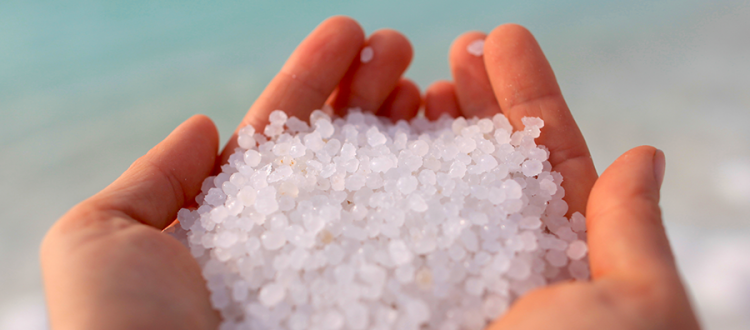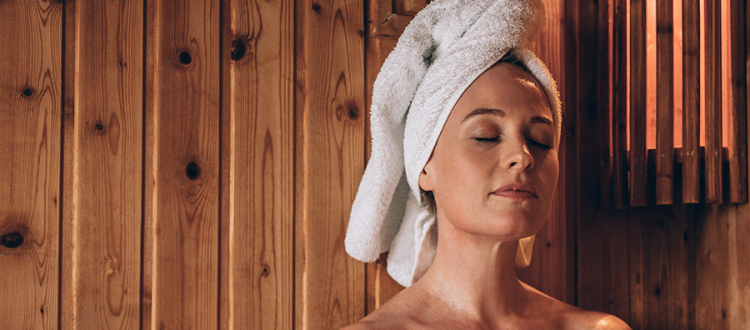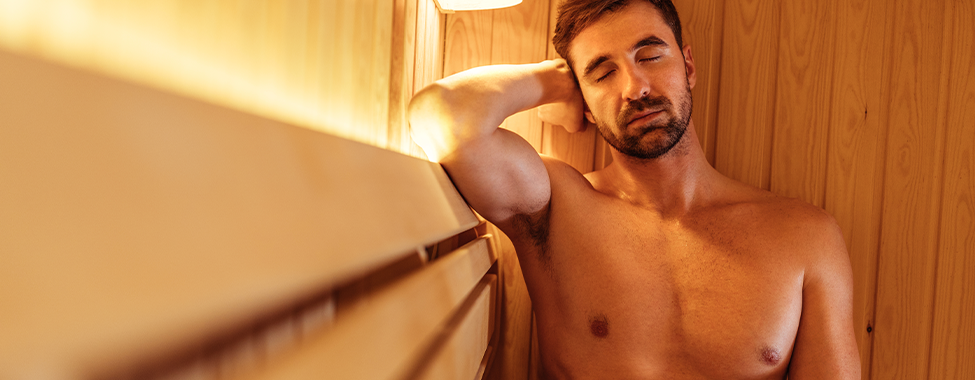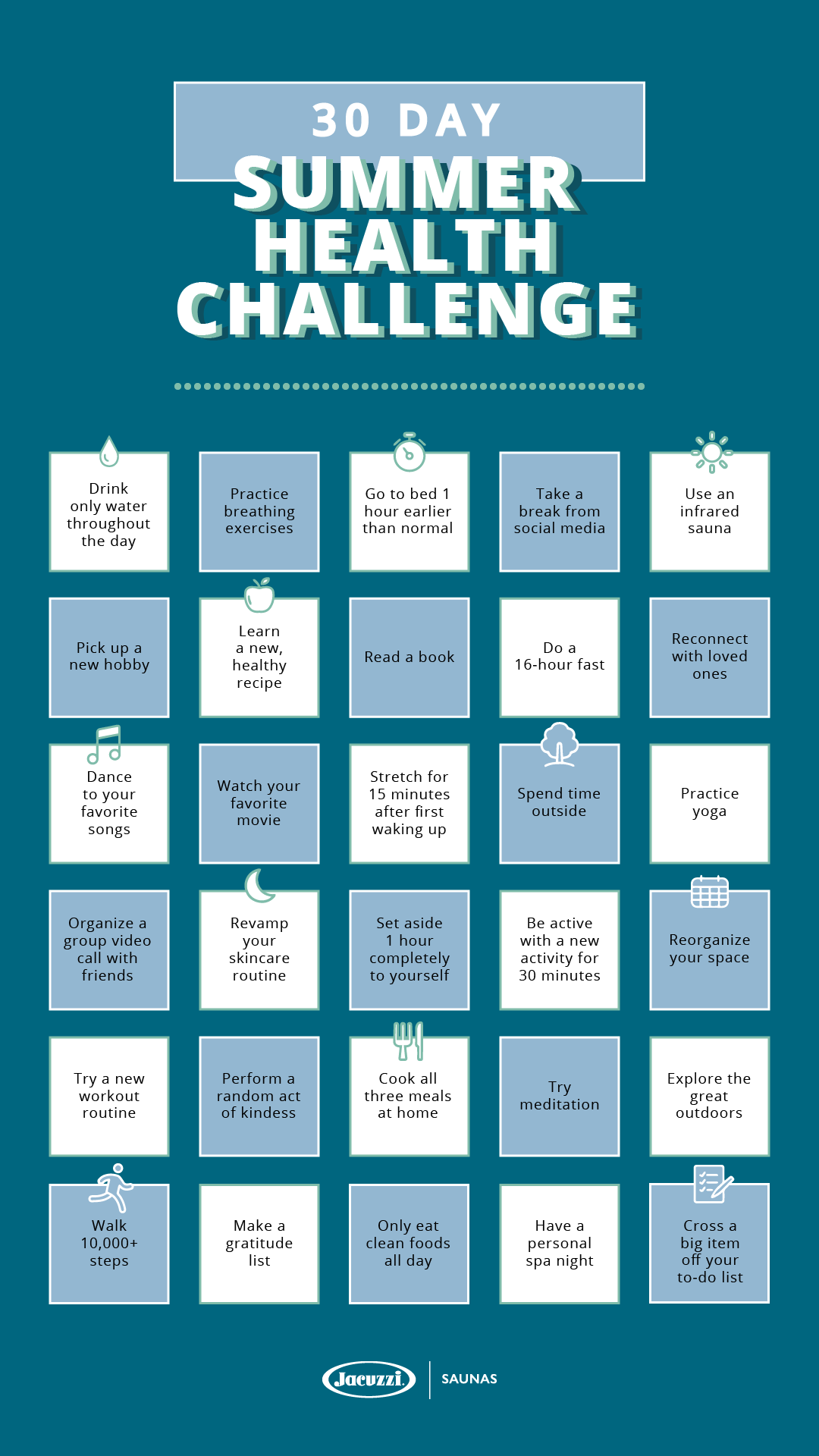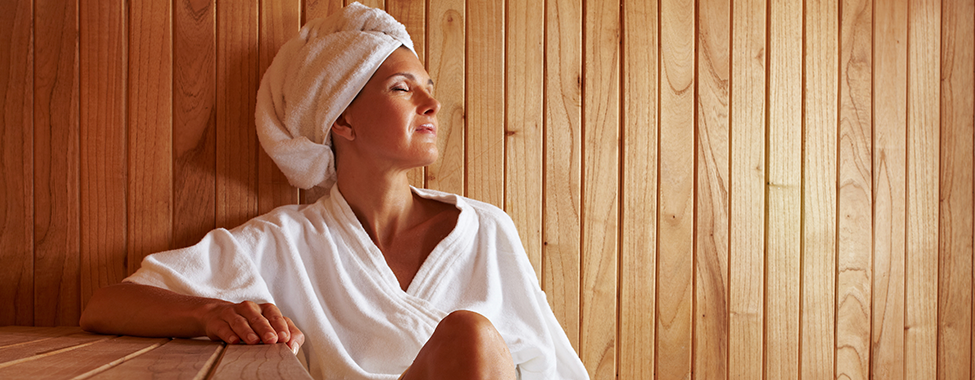While using an infrared sauna has a slew of health benefits, that doesn’t necessarily mean it is safe for all to use, especially if you are pregnant. Luckily, there are many other alternative and complementary therapies such as massage and acupuncture to try instead to help alleviate pregnancy side effects. Read on to learn more about why not to use a sauna while pregnant, and tips on what to do instead to make sure you have a healthy and happy pregnancy.

Using a Sauna While Pregnant
Is it Safe to Use an Infrared Sauna During Pregnancy?
The short answer: Speak to your doctor before using a sauna while pregnant.
Using the sauna during pregnancy, especially during the first trimester, is a risk. Most doctors recommend avoiding it. It is not recommended to use a sauna during pregnancy, as extreme heat exposure can lead to complications such as birth defects, miscarriages, or injury to the brain/spinal cord.
If your doctor gives you the OK to use a sauna during your pregnancy, limit the amount of time you spend inside to 15 minutes or less. Some doctors recommend avoiding saunas completely during pregnancy. Even a limited amount of time in the sauna can result in complications for your baby. You should leave the sauna immediately if you start to feel faint or nauseous. This may be a sign that your body is overheating.
Pregnancy and Heat Exposure
Studies have shown that some babies exposed to high temperatures (like those of a hot tub or sauna) during the first trimester experience serious complications to the brain and/or spinal cord. It’s also possible that exposure to extreme heat may cause or contribute to miscarriages or birth defects like ventricular septal defects and patent ductus arteriosus. Research is ongoing.
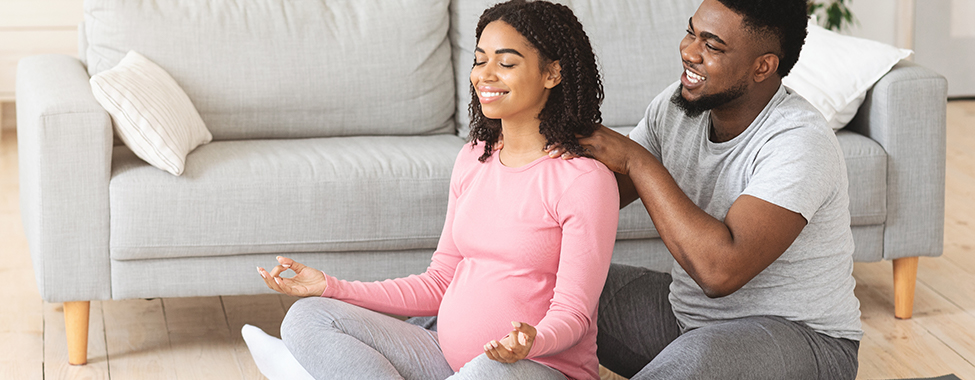
Using Alternative & Complementary Therapies While Pregnant
Complementary therapies are therapies that are not part of the standard medical care usually prescribed by medical doctors. There are many types of complementary therapies, such as acupuncture, massage, and chiropractic medicine. They are also sometimes referred to as ‘integrative medicine’.
Some women turn to complementary therapies during pregnancy to help reduce symptoms such as nausea and vomiting and low back pain. Some women might also use these therapies to prepare for labor and to increase their chances of an uncomplicated birth. Since using a sauna when pregnant is not recommended, try these alternative and complementary therapies instead:
Acupressure
You’re probably already using acupressure without even realizing it. Ever massage your temples when you have a tension headache? That’s acupressure: a firm thumb or finger massage on certain points of the body. The points treated in acupressure are usually the same areas used in acupuncture, but instead of using needles, pressure is applied. Acupressure can be very helpful in relieving morning sickness (in the form of sea-bands or relief bands worn around the wrists) or back pain, among other pregnancy complaints. It can also help relieve the pain of contractions during labor.
Acupuncture
Acupuncture uses hair-thin, disposable needles to stimulate specific points on the body (each area is thought to be associated with an organ function). Like acupressure, acupuncture can restore your body’s balance and help it maintain its own health. Acupuncture can be helpful in treating morning sickness, constipation, backache, hemorrhoids, breech presentation, pain during labor and even insufficient milk production postpartum — best of all, with no side effects.
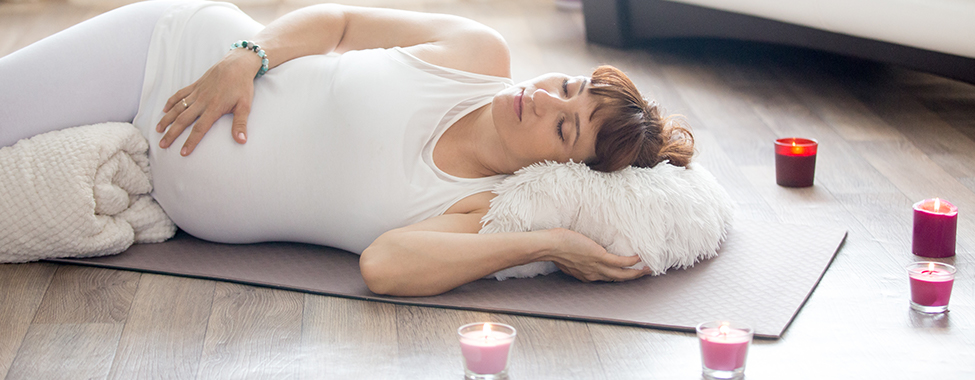
Aromatherapy
Essential oils for pregnancy or any other situation aren’t meant to be ingested. Rather, they’re inhaled or diluted into a solution and used topically, whether it’s a spot treatment or bath soak. Since many medications are off-limits when you’re expecting, using certain essential oils during pregnancy can be a great alternative for treating illness and uncomfortable symptoms, and that’s exactly why aromatherapy is becoming more popular with pregnant women to help relieve nausea, soothe muscle aches, improve sleep and much more.
Do your research before using essential oils, as some have been deemed dangerous to pregnant women.
Chiropractic Medicine
Chiropractors use physical manipulation to realign joints of the body and spine. In pregnancy, chiropractic manipulation can help with back pain and sciatica. Be sure that you are receiving chiropractic care from a chiropractor who is well trained in treating pregnant women.
Exercise
Exercising during pregnancy has been found to reduce risk of pregnancy complications, lower odds of delivery complications, speed post-delivery recovery, boost your mood, lower blood pressure, ease back and pelvic pain, fight fatigue, improve sleep, and relieve constipation.
Hydrotherapy
Love taking a nice long bath to relax during pregnancy? Ever think about relaxing in the tub during your labor? That’s what hydrotherapy is all about: the therapeutic use of warm (not hot) water to reduce your discomfort from pregnancy side effects. While you shouldn’t use a sauna when pregnant, a warm bath is a perfect swap. Some doctors recommend that the water temperature stay below 95°F during pregnancy and to stay in the water no longer than 10 minutes.
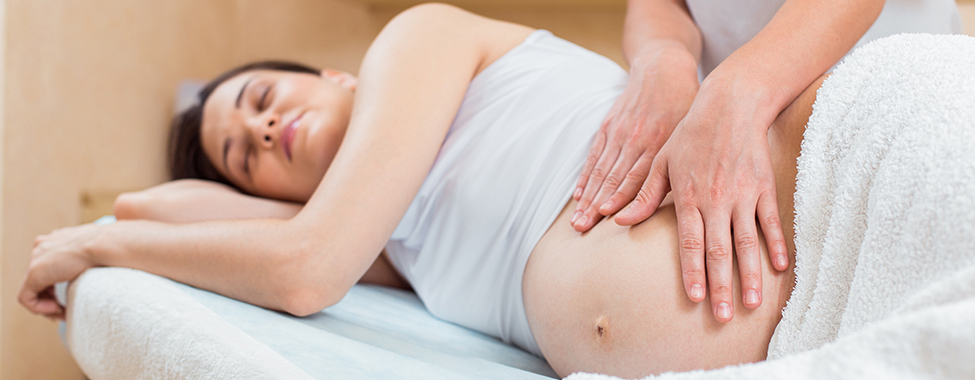
Massage Therapy
Whether a massage comes from your partner’s untrained hand, or from a professional masseuse trained in prenatal massage, getting rubbed the right way during pregnancy can help relieve many pregnancy symptoms — from heartburn and headaches, to backache, and sciatica. Massage can also be wonderful during labor to ease pain. A counter-pressure massage is especially helpful for back labor.
Meditation
Deep relaxation techniques, meditation and visualization can help you cope with a variety of physical and emotional stresses of pregnancy. Such techniques enable you to relax and focus your concentration, reducing stress, lowering your blood pressure, and enhancing your peace of mind. And who couldn’t use that during pregnancy?
Reflexology
Reflexology, a therapy in which pressure is applied to certain areas of the feet, hands and ears, can be beneficial in helping relieve nausea, constipation, fatigue and backache, among other pregnancy symptoms. Reflexology on certain areas of the feet can also stimulate labor contractions – good if you’re overdue, not so good if you’re not near term. So make sure that the reflexologist is well trained in pregnancy reflexology and avoids those areas of your feet before term.
Using a sauna when pregnant unfortunately isn’t a recommended practice, but there are plenty of other therapies available to help manage pregnancy side effects. Speak to your doctor before trying any new alternative and complementary therapies during your pregnancy to ensure you and your baby are safe during the process.
 Canada
Canada Australia
Australia New Zealand
New Zealand Malaysia
Malaysia China
China


